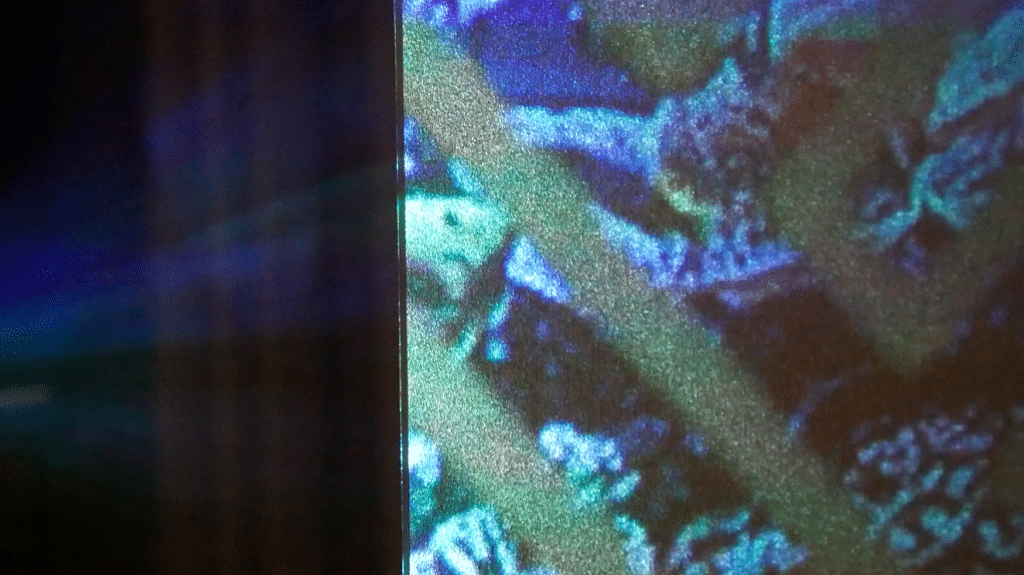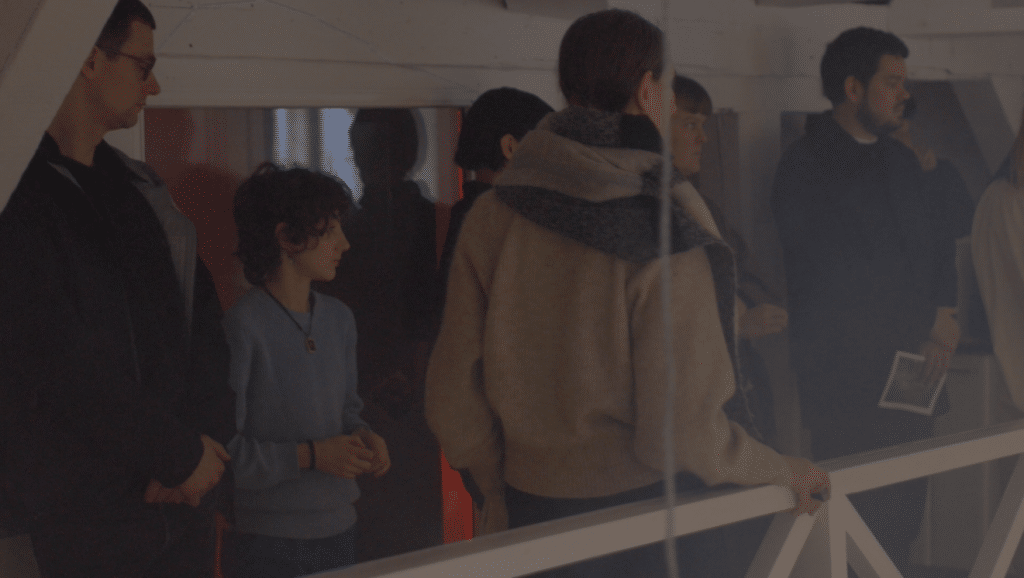
The installation ‘372.835 words about climate’ came into being through an artistic collaboration between dramatist student, Marie Bjørn, artist, filmmaker and founder of Other Story, Madeleine Kate McGowan and production leader at NXT, Nikoline Kern. Activated by Marie Bjørn’s residency at Other Story, where she interviewed fourteen different people, a witch, a biologist, a performer among others, and asked them questions such as: “What is Nature?”, “If Nature had a voice what would it say?”, “Can jellyfish fall in love?”. The answers were installed as long text threads in the NXT space and from this body of text, ten young artists interpreted and created art pieces, which were presented on this day. To describe such a complex installation, the strongest documentation is possibly the reflections of the guests who experienced it. So we invited one of the guests, young philosopher Daniel Frank Christensen to write about it.
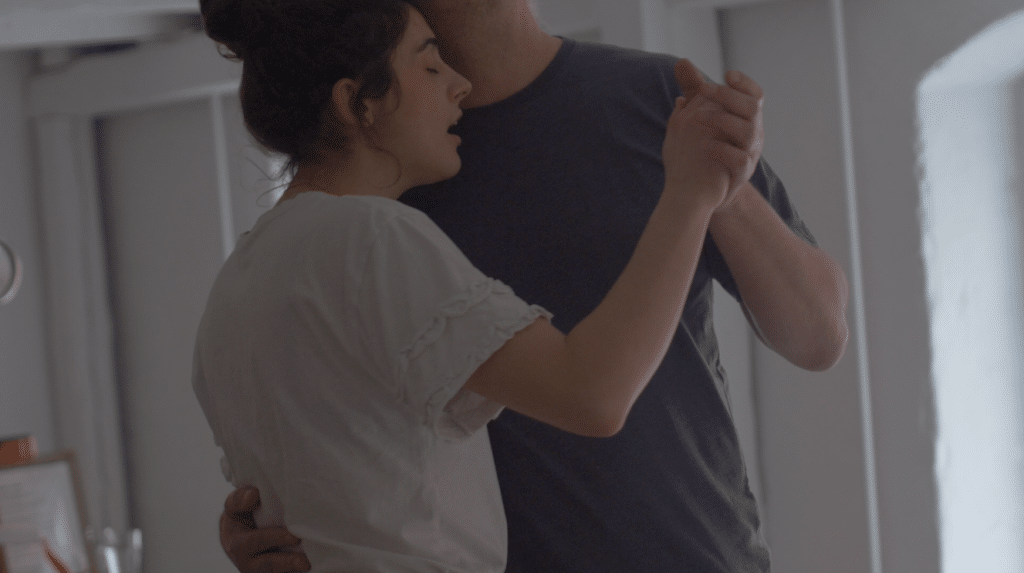
Youth Climate Revolt as therapeutic aesthetic social action
Written by Daniel Frank Christensen, Philosopher (Ma in Philosophy).
On Sunday the 10th of March 2019, with five days up to the planned global school strikes protesting inadequate political and commercial climate change mitigation efforts, Copenhagen-based Other Story staged an inspiring Youth Climate Revolt performance exhibition at NXT; a base-line melancholic and yet reaffirming, bubbling taste of insurrection.
I travelled toward NXT through Copenhagen that early spring day amid the darkest of rainclouds and abrasive hailstorms, burdened in a crisis simultaneously rooted in personal, existential, relational, political, social, functional, biological, and aesthetic dilemmas. I thought I might briefly and politely have a look at the exhibit, talk to my hosting friend about a sensitive practical matter and then depart. Although when I arrived at NXT, a centrally located project space nestled in the backyard of Copenhagen’s Gammel Strand quarter, I felt myself and my woes melt into in a complete sense of collective thematic resonance.
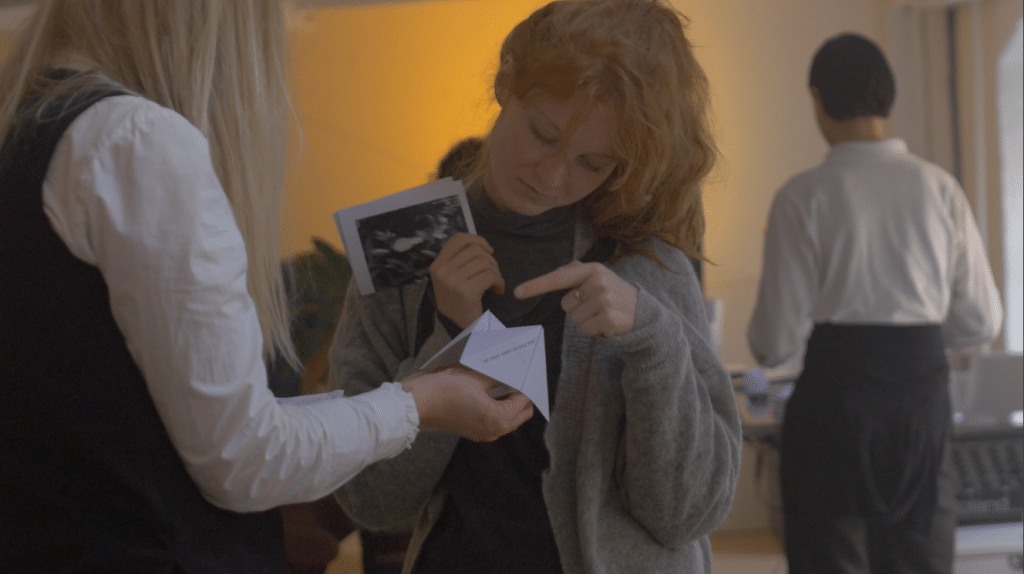
Dust mask fortune telling
I climbed the ladder leading from the foyer to the first story – a white repurposed office space enveloped in smoke machine mist and soundscapes – and was greeted by a woman wearing a white mask, holding one of those origami tetrahedron fortune tellers school kids use. Text fragments were printed on the device’s leaves, which she folded three times following each of my selections. This seemed quite in line with many an opaque performance installation and I awkwardly resisted passing into emersion, but then again, I hadn’t really started paying attention. She then led me to a thick, whitewashed wooden structural beam featuring a string of type, and I began to read.
The text’s tone and subject was immediately recognizable and drew me in for a closer read: Climate science-informed philosophical observations, consistently interwoven with critiques of fossil capitalism and economic politics, the smug, pseudo knowledge of half-embalmed suits employing bribable academics to employ the methods of their training for the systematic, methodologically informed, but ultimately cherry-picked fallacies, tricks weaned from defending big tobacco and their ilk with the benefit of the doubt.
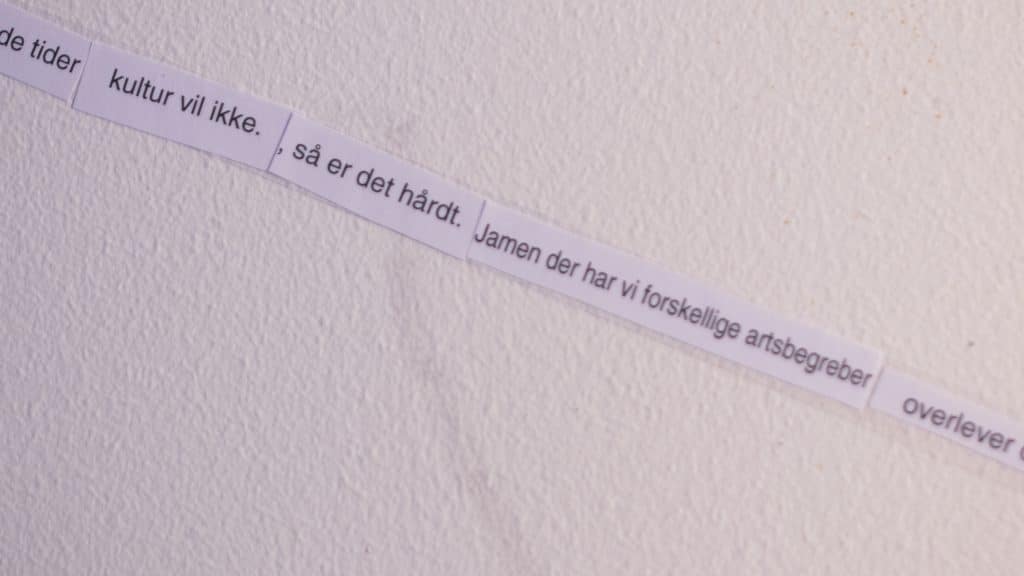
I read on – just like I would have read a book or an essay. It continued as such.
Daily, I read and process texts dealing with the details of these problems. Earth’s atmosphere gets pumped with massive daily volumes of greenhouse gases let off by burning fossil fuels, thawing permafrost, digesting livestock etc. amid spun Swiss Alp corporate narratives of realistic responsible action, renewable energy expansion, green growth and ethical investment trends – all while global oil demand surges by around one million barrels per day and crude companies celebrate their most recent doubling of revenue and hail new drillings as victories told in the language of competitive gaming glorifying advantages and seeking redemption with claims of material-economic advancement taking place in the ‘developing’ world – thus my personal-political dilemmas.
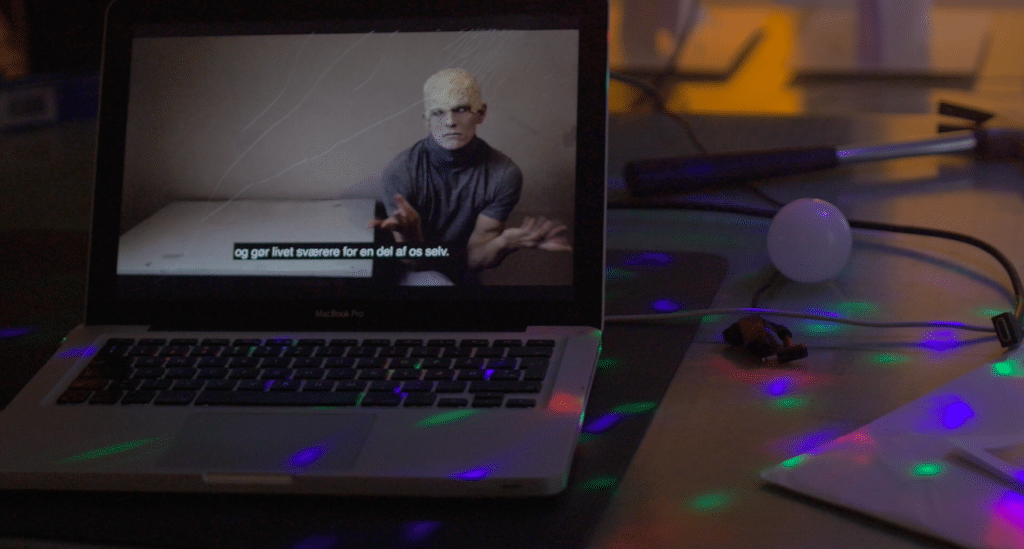
Meanwhile in the room, and indeed throughout the text, there were streaks of another message devoid of resignation, but neither of hope nor optimism as such, but rather a will to a demographic power seize, reiterating what has already been made so clear with best descriptive and prescriptive insights, but these days succinctly repeated in by 15-year old voices as a daggers of crippling guilt to the guts of colluders, perpetrators, and the complicit: We don’t trust you, your ‘solutions’ are inadequate, may your time of power end, and come to end perhaps gradually and then suddenly starting here on Friday, the Ides of March, the Romans’ day for settling debts, now when school children around the world go on strike for – this time around – one day while rhyming the message of Gretha Thunberg, paraphrased as such:
‘We will not allow you to reproduce yourselves in us. We are against you. We want to inherit a habitable planet. We refuse to train for the empty and mostly harmful vocations you intend for us’.
I continued to read all the through the room, upstairs, across all sorts of surfaces, into the kitchen, along the bannister, into a small room windowed toward the interior. And then I had enough of the text. I – have – already – understood.
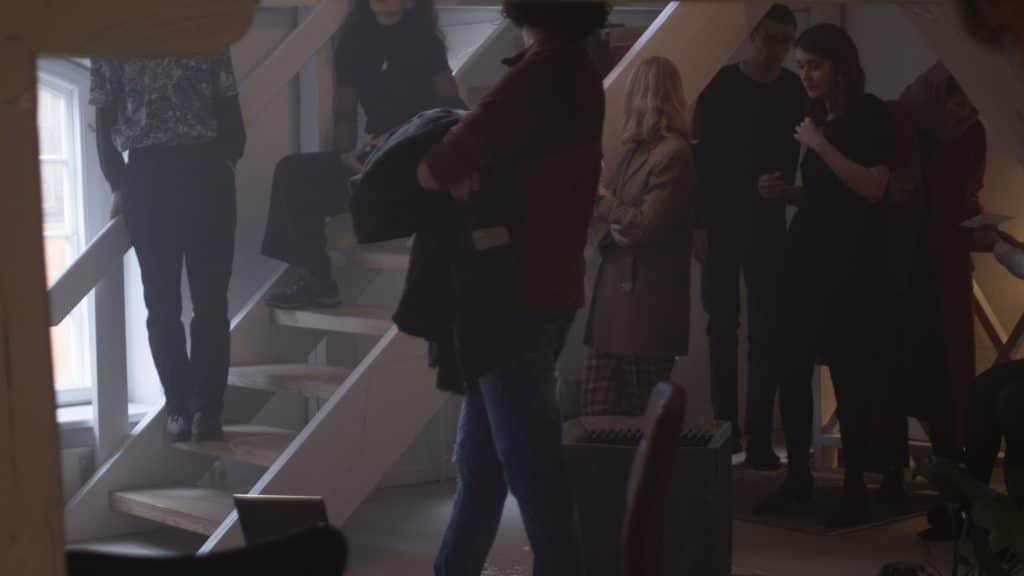
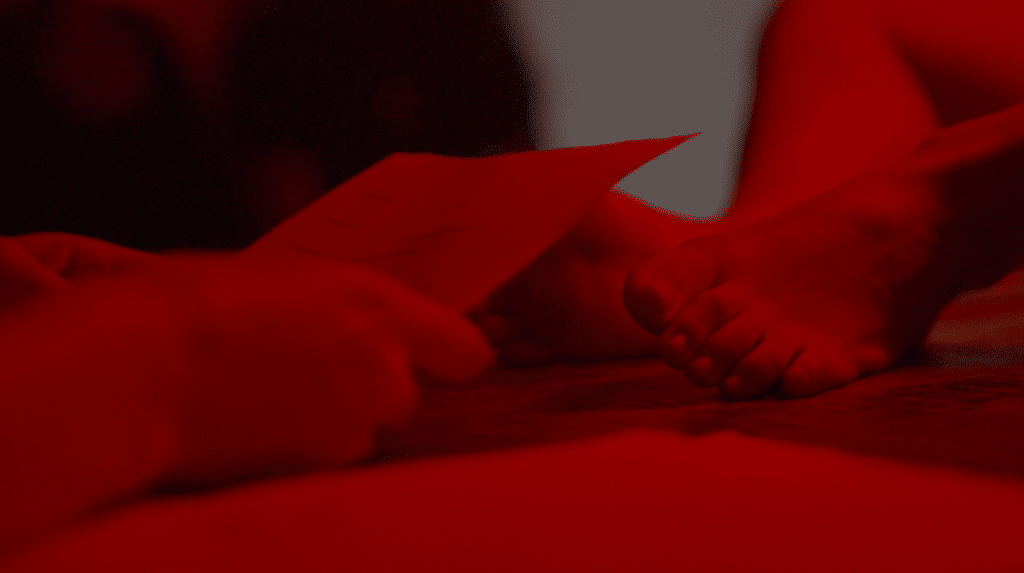
The post climate apocalyptic thriving life of jellyfish.
Just after walking downstairs to sit and digest, a charismatic woman sat down on the stairs, bowlegged, like a dockworker about to tell a triumphant anecdote. She said: “This story cannot be told in five minutes, this story cannot be told in five minutes because this story is about the future, which means that it is also about the past…” She told of the situation of a coming marine environment in which adversity for some became the ripe habitat of jellyfish devouring and being devoured while reproducing their flimsy half-liquid bodies, seizing upon prey with corrosive tentacles only to dissolve into cells and further into chemicals. The story was told most matter of fact and meaning ‘it’s still life, life is larger than us. Biology is more resolute and truly resilient than the Anthropocene apologists might have us ponder in self-dissatisfied solipsism. Remarkable delivery.
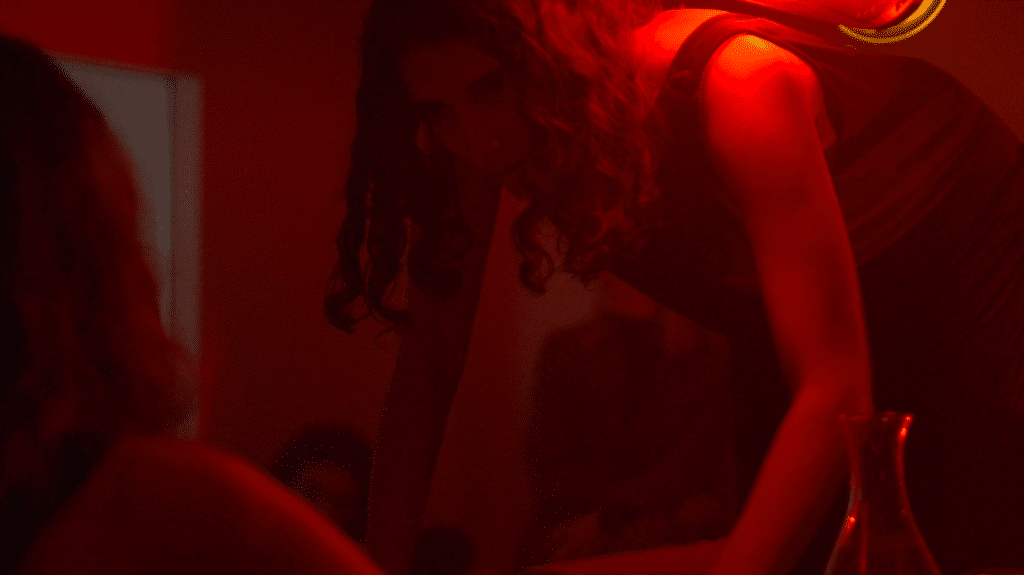
‘We’, ‘you’, ‘they’
I walked upstairs again to the small windowed room. A woman wearing a dark formal dress sat at a table, along the black velvet draped wall hung with many other similar dresses. She delivered a monologue, evasive to reproduce or portray directly, timed and out of time with her recorded voice, an incantation of social sameness led by emphatically shouted collective pronouns. “We! are the ones who enter the streets…” “They! can hear Us! saying…”. She spoke in range of moods swinging from proud and collected messages, timed with clarity and precision with the audio track, like a marching beat ready to pounce on antagonists, then on to stumbling and awkward missteps, self-conscious hesitation, mistakes, and off-time double tracking. She would stop abruptly, shift hair from eyes, reposition her body, move to another chair, and then start again. She took off her dress, fetched another from the wall and slipped it on, sat down again and smiled before yelling another rallying cry “We!…” Yes. Indeed.
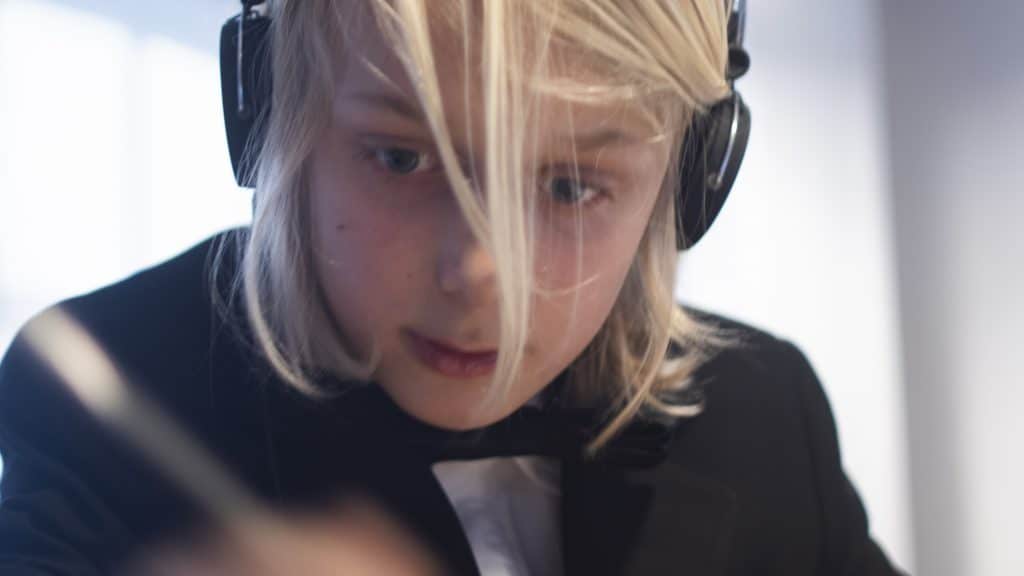
Edgar Tjalfe, inviting guests to reflect on ideas of trees
“Did you draw one of your favorite animals?”
A young boy, perhaps eight, clad in a black tuxedo stood behind a table featuring pencil and crayon drawings of flora and fauna, but all of them chimeras, trees with abnormal growth, animal hybrid roots, feather leaves, horse-hooved shrubbery, one-legged bugs. He stood behind the table waiting for an interaction. An adult man approached him like a toy shopkeeper and asked about the installation. He was as generous and willing as one might imagine, answering, “Yes, well, you see here, I drew this. And this is no normal tree. See? Its roots are different.” The man asked him, “Did you draw one of your favorite animals.” “No,” the boy answered and continued: “But this one is sort of an animal, but its bark is …” The man didn’t buy it. This little kid ought to allow himself to be infantilized and say something tangible, better ask again, he seemed to reckon. “So, so, you drew these trees because you think they are nice?” he asked. “No but I did draw them,” he answered, guiding the man to the side of the table toward another smaller table supporting an easel, paper pad, and calligraphy paint brushes. “And if you want to, you can draw something yourself, and if you want, you can also pay some money to this telephone number to buy a piece of a rainforest, not in Brazil but in Mexico. Southern Mexico. Then they won’t cut down the trees,” he explained.
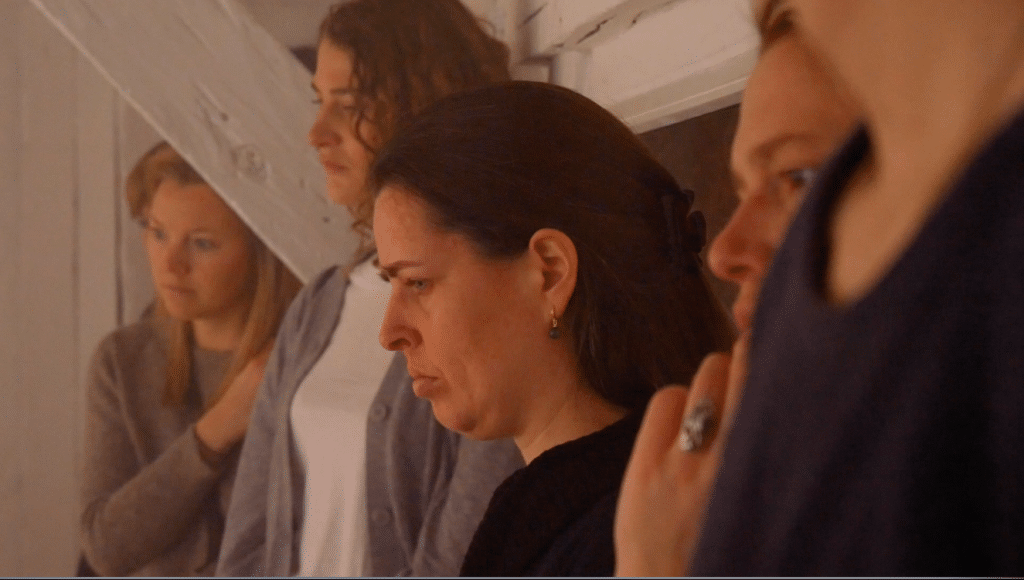
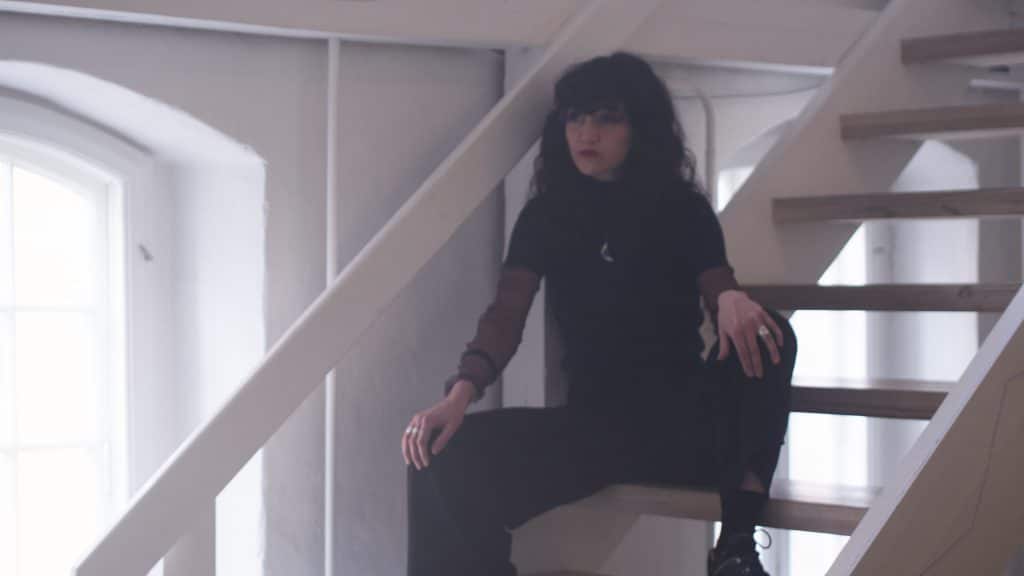
Jelly fish Bach fugue
At this point quite saturated, I sat down on a plush, pillowed sofa in the first story room not far from the chimeras adjacent to a woman sitting and waiting with a white cello. I waited for her to play for 15 minutes or so, reeling in climate melancholia.
Then the jellyfish narration began again. I was about to leave the spot, having already taking in the experience, but then the cello began to play a Bach cello suite in D minor while the story was retold, repetition with variation, and the cello played the accents along the lines of J.S.’s piece, but not just to play the work for its own sake and format, as a sonic frame – and the story as meaning underpinning and validating the music’s presence. It worked well.
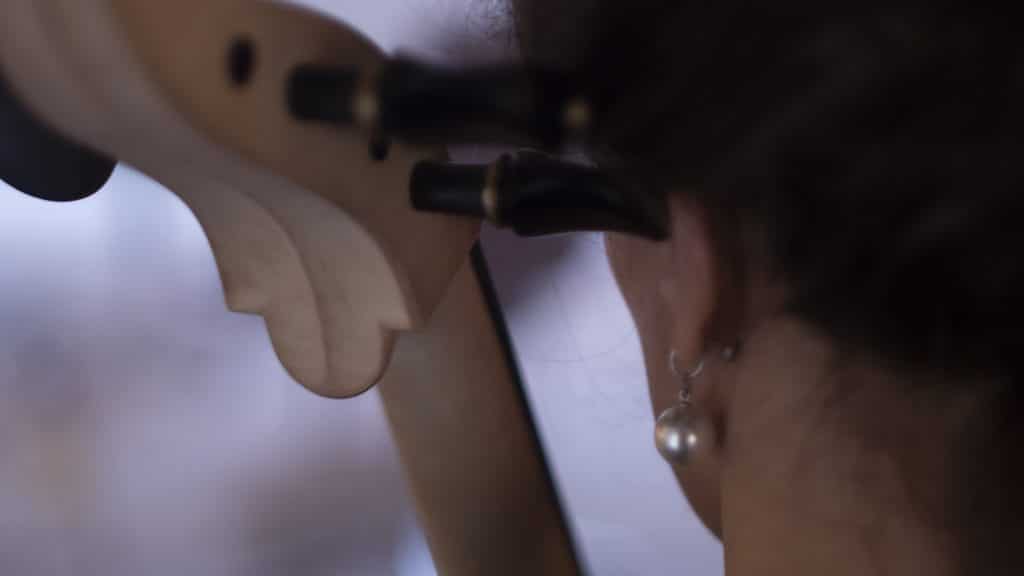
Therapeutic aesthetic social action
I think the exhibition struck at the center of what many modern and late-modern aesthetic media fail to or fall short of achieving. A reciprocal relationship between form and content involving meaningful political critique accentuated and amplified, but also informed by the expressive and sensual social act. I usually find any crevice for attacking and distaining art for art’s sake, but I could find none here. More importantly for my experience and in general, the Youth Climate Revolt exhibition managed to capture and convey an understanding of blue moods. It seemed to emphasize that personal experiences of malaise are also intersubjective states of being resulting from common conditions of living in this world.
There are few states of oppression that are so all-encompassing and inclusive as living on a jeopardized planet. Even the fossil executives ought to be able to reflect on such a plight and feel awful. And all social movements consist of converts. So, whereas astute texts are required to cement clear understandings and guide intention, clear writing as a format for urging change is so often unobtrusive and easy to compartmentalize. Here, aesthetic media stands to gain worldly purpose by hybridizing with critique, and critique can gain much more force and reach by involving more potent forms of delivery. Let us keep repeating, rephrasing, personalizing, and externalizing these messages.
